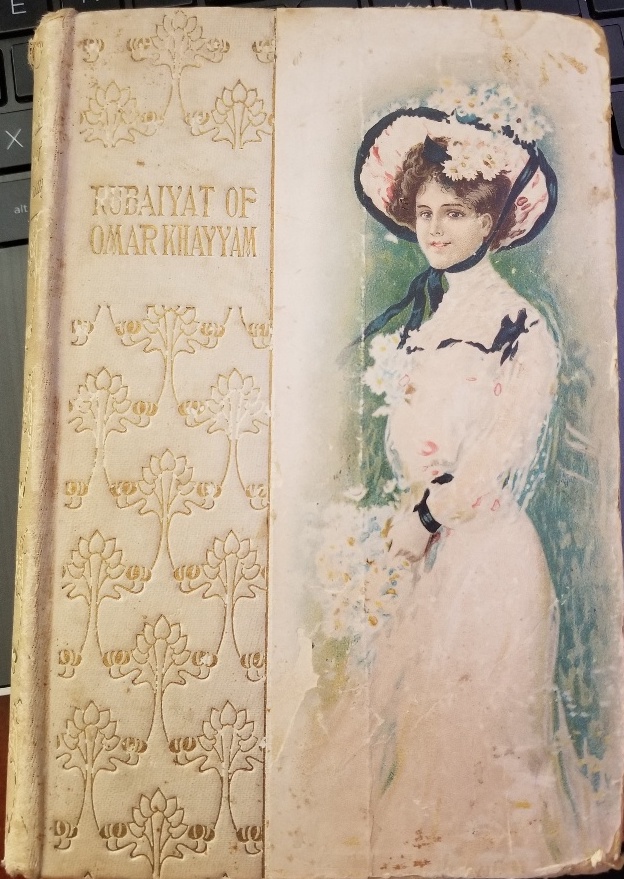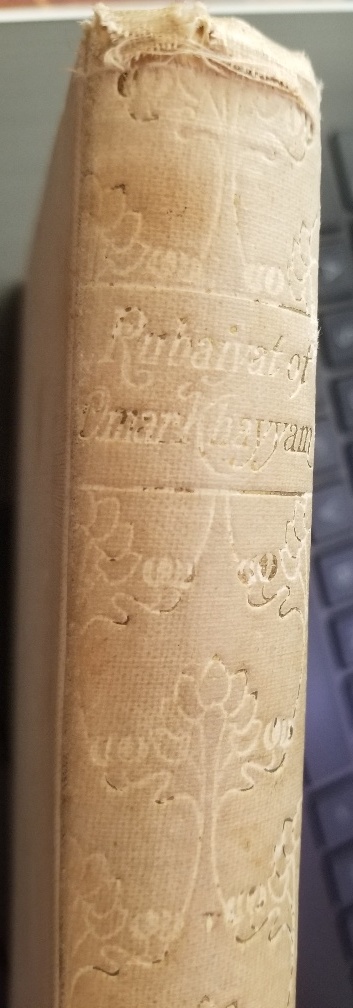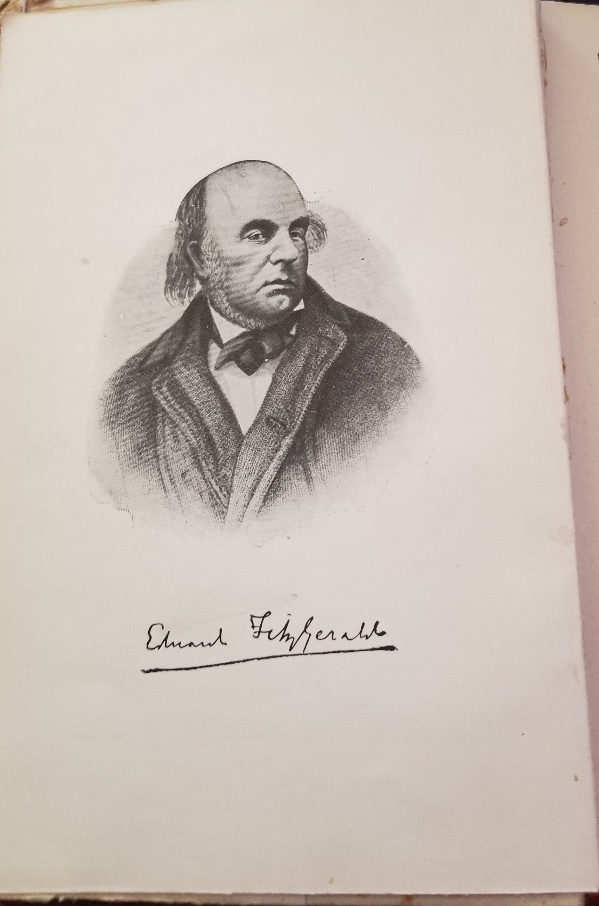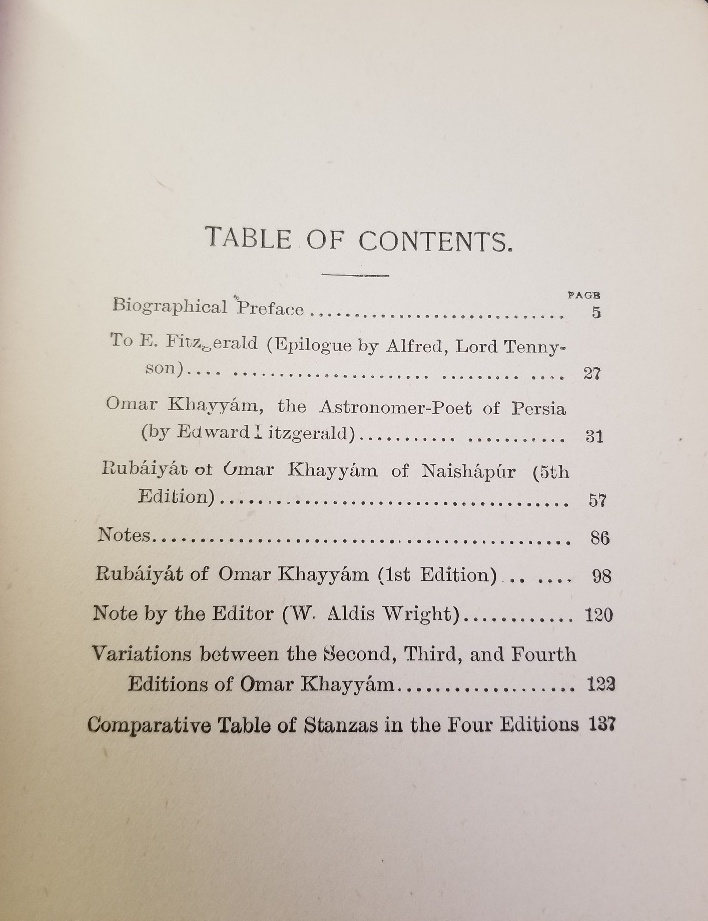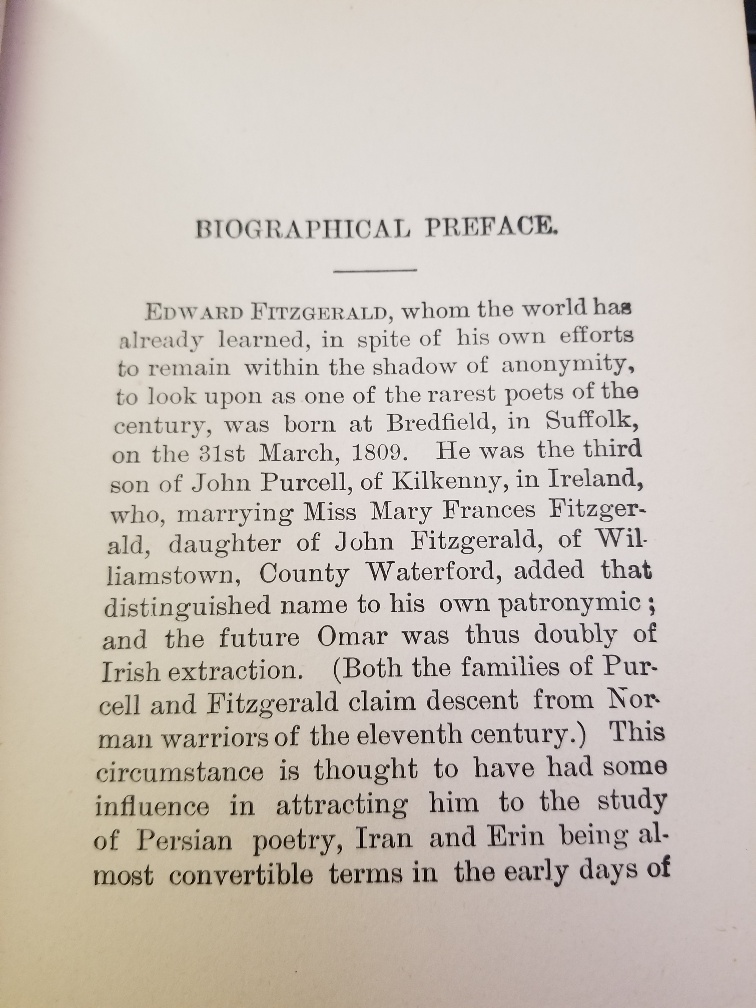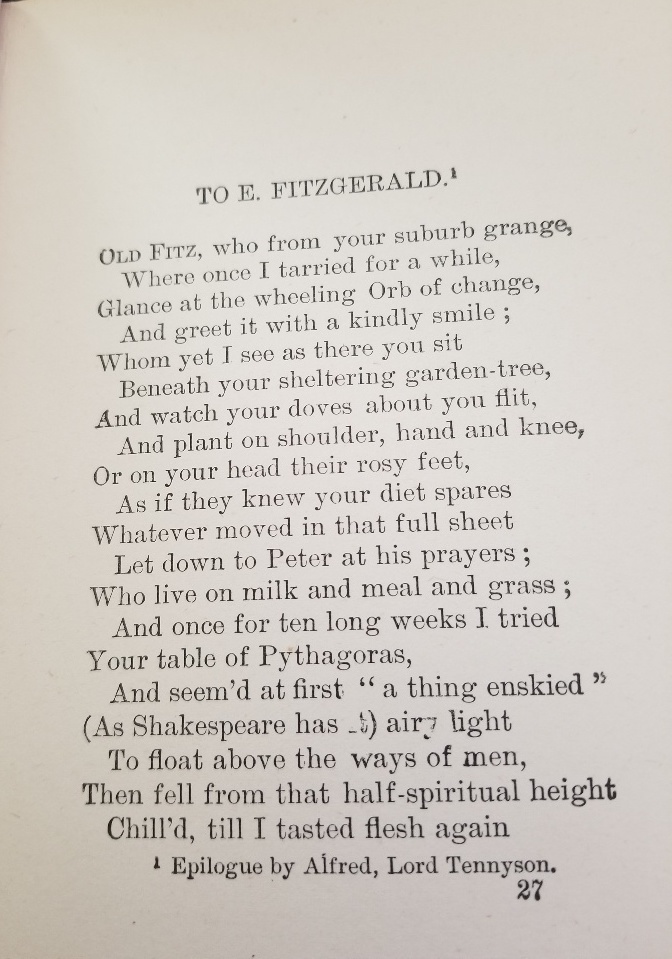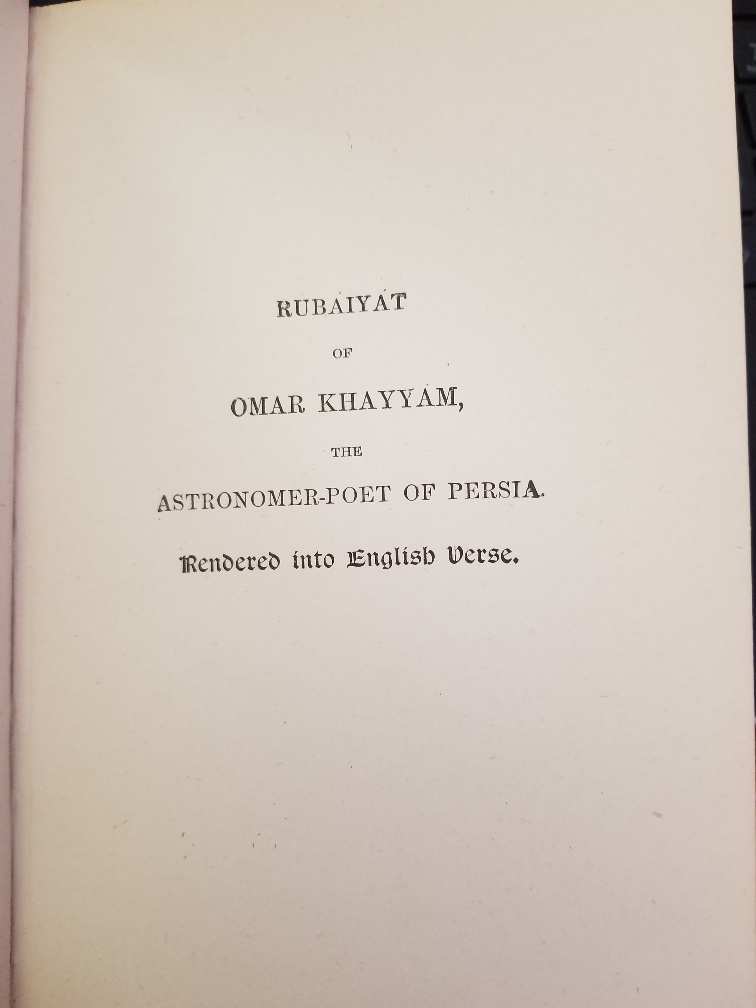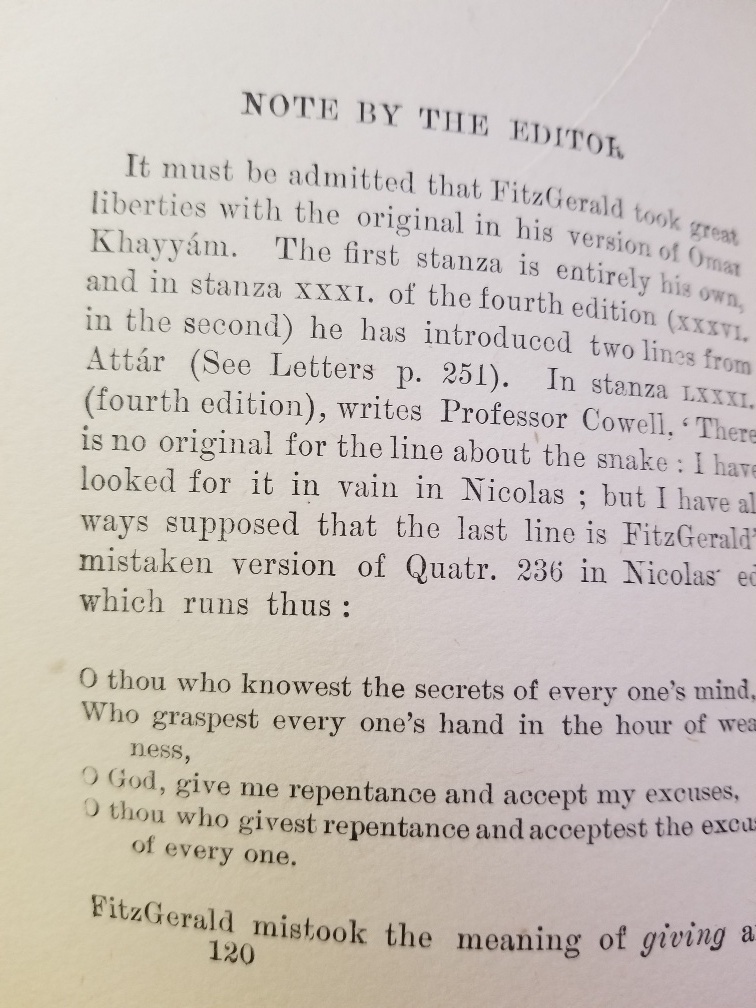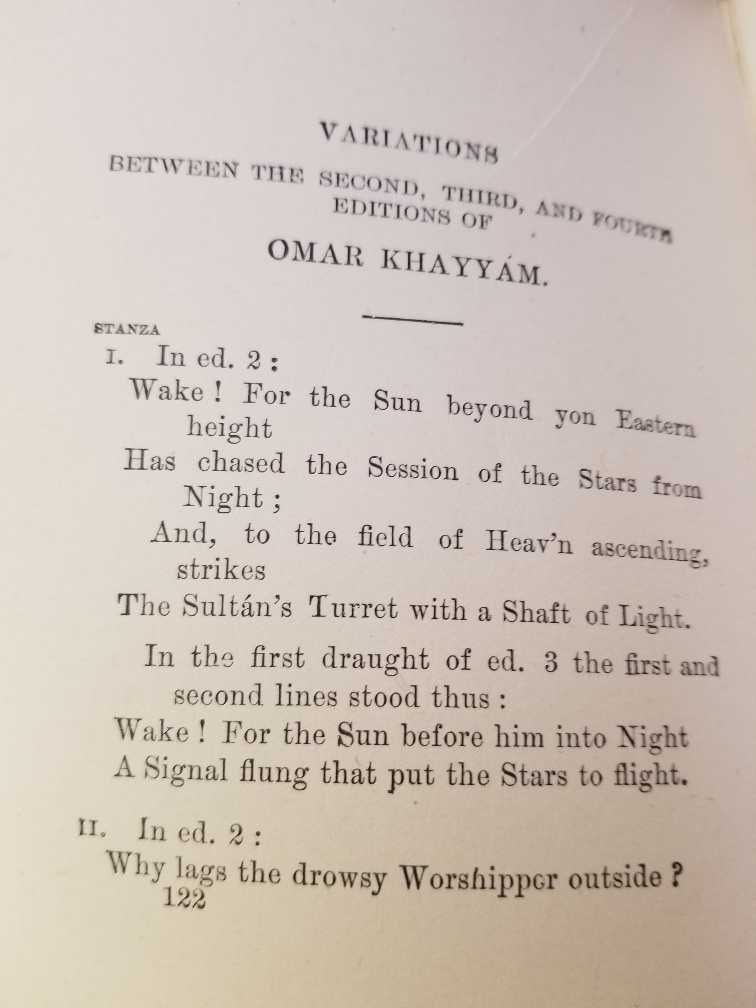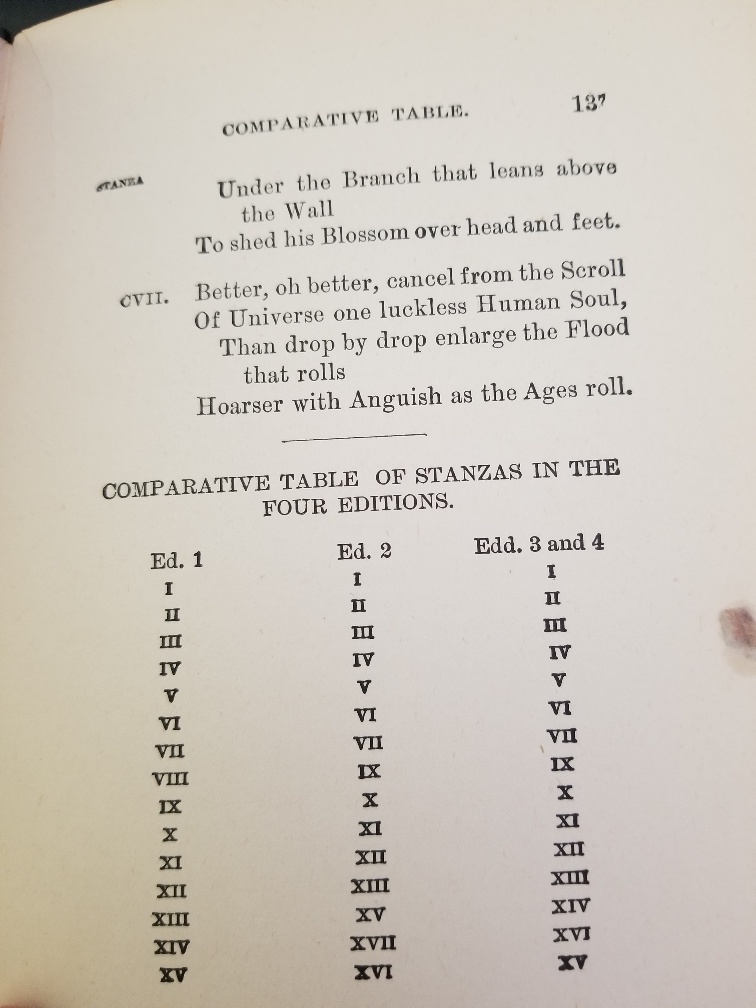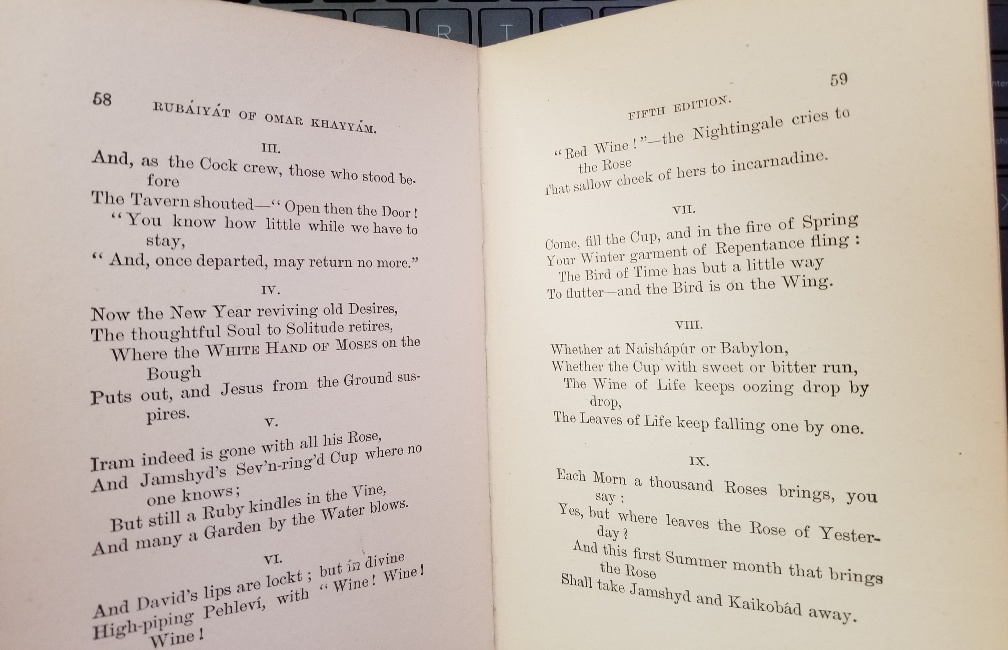The Rubaiyat of Omar Khayyam:
~1900s Hurst & Company Edition
This Hurst & Company Publishers edition was contributed by a visitor seeking to have it added and also to date it. Through some research on the publisher, I dated it at late 1900s.
This is interesting knowing the history of the contributor’s family—it came from the contributor’s father who was born in 1911…after this book was probably published! But somehow it fell into his possession, stayed with him, and was an enduring favorite of his. Such a great favorite that bits of the Rubaiyat were incorporated into his eulogy:
The moving finger writes; and, having writ, moves on: nor all thy piety nor wit shall lure it back to cancel half a line, nor all thy tears wash out a word of it.
For some we loved, the lovelist and the best, that from his Vintage rolling Time hath pst, Have drunk their cup a round or two before, and one by one crept silently to rest.
With them the seed of Wisdom did I sow, And with mine own hand wrought to make it grow: And this was all the Harvest that I reap'd, "I came like Water, and like Wind I go."
It’s really beautiful. The last part really hits me…it will forever change how I read that quatrain.
All images were taken by the contributor. Thank you so much for sharing this!
The Book Itself
I think this edition takes the top place for most images related to the book itself. Lots of associated sections, tables, and what not, are included in this edition and its listing.
The book cover image of the lady in white is strange and aesthetically incongruent with the Rubaiyat of Omar Khayyam in general.
The Poetry
Nothing exciting here! Very basic.
History/Information Sourcing
No date was given on this edition and neither I nor the contributor could find an exact match being listed anywhere. So I went down the publisher research rabbit hole and the results were very interesting.
Basically, Hurst & Company Publishers went out of business in 1919. According to this website, Hurst & Company was known for churning out cheap copies with strange covers to try to sell. This website, focused on the publishing history of Lucile includes Hurst & Company information and edition listings. That helped date this one as some of the late 1900s editions of Lucile had covers similar to this Rubaiyat. My guess is that the Lucile covers that look like this Rubaiyat’s were either part of a marketing wave using that aesthetic or were just copy-paste jobs, which is why it makes no sense for a Rubaiyat. It was business/marketing focused.
This website, focused on the Tom Brown Series, has some other history on the publisher itself
